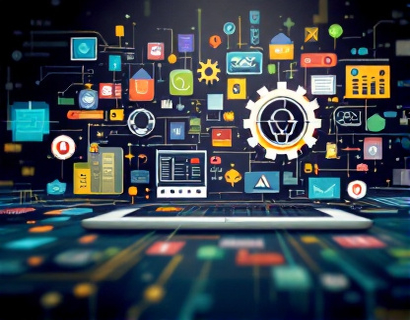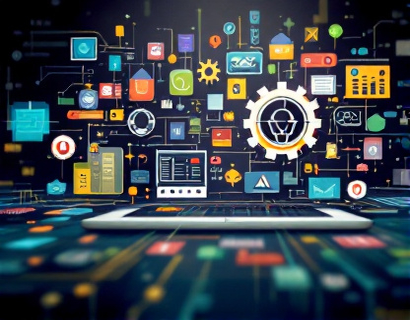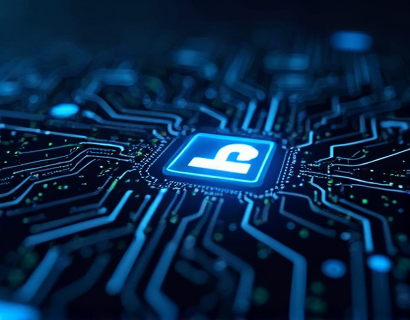Seamless AI and Blockchain Integration: An Essential Guide for Business Digital Transformation
The integration of Artificial Intelligence (AI) and blockchain technology represents a pivotal shift in the landscape of business operations and digital transformation. As companies strive to stay competitive in an increasingly digital world, understanding how to effectively combine these two cutting-edge technologies is crucial. This guide serves as a comprehensive resource for business leaders aiming to navigate the complexities of AI and blockchain integration, offering actionable strategies to streamline operations, enhance security, and unlock new growth opportunities.
Understanding AI and Blockchain
Before delving into the integration process, it's essential to grasp the fundamental concepts of AI and blockchain. AI refers to the simulation of human intelligence processes by machines, particularly computer systems. These processes include learning (the acquisition of information and rules for using it), reasoning (using rules to reach approximate or definite conclusions), and self-correction. AI technologies encompass machine learning, natural language processing, and computer vision, among others.
Blockchain, on the other hand, is a decentralized digital ledger technology that records transactions across multiple computers in such a way that the registered transactions cannot be altered retroactively. This technology ensures transparency, security, and immutability of data, making it ideal for applications requiring high levels of trust and accountability.
Benefits of AI and Blockchain Integration
The synergy between AI and blockchain can drive significant value for businesses. Here are some key benefits:
- Enhanced Security: Blockchain's inherent security features, combined with AI's advanced threat detection capabilities, create a robust defense mechanism against cyber threats.
- Improved Efficiency:
- Trust and Transparency:
- Data Integrity:
- New Revenue Streams:
AI can automate and optimize various processes, while blockchain ensures that these processes are transparent and tamper-proof, leading to more efficient operations.
Blockchain's immutable ledger provides a transparent record of transactions, which AI can analyze to build trust and ensure compliance with regulations.
AI algorithms can leverage blockchain's data integrity to ensure that the data used for analysis is accurate and unaltered.
By combining AI and blockchain, businesses can create innovative products and services, opening up new revenue opportunities.
Challenges in AI and Blockchain Integration
While the benefits are compelling, integrating AI and blockchain also presents several challenges:
- Technical Complexity:
- Scalability Issues:
- Regulatory Uncertainty:
- Data Privacy Concerns:
- Cost Considerations:
The combination of these advanced technologies requires specialized knowledge and expertise, which can be a barrier for many organizations.
Current blockchain technologies may face scalability challenges when integrated with AI systems that require high computational power.
The regulatory landscape for both AI and blockchain is still evolving, creating uncertainty for businesses looking to integrate these technologies.
Ensuring compliance with data privacy regulations while leveraging the transparency of blockchain can be challenging.
The initial investment in integrating AI and blockchain can be substantial, requiring careful cost-benefit analysis.
Actionable Strategies for Integration
To successfully integrate AI and blockchain, businesses should consider the following strategies:
1. Assess Current Infrastructure
Begin by evaluating your existing IT infrastructure to identify areas where AI and blockchain can add the most value. This assessment should include an analysis of current pain points, data management practices, and security measures.
2. Build a Skilled Team
Assemble a team with a diverse skill set, including AI experts, blockchain developers, and compliance specialists. Continuous learning and upskilling are essential to keep pace with the rapid evolution of these technologies.
3. Start Small
Implement pilot projects to test the integration of AI and blockchain in a controlled environment. This approach helps in identifying and addressing potential issues before a full-scale rollout.
4. Focus on Data Quality
Ensure that the data used in AI algorithms is accurate, complete, and compliant with relevant regulations. Blockchain can play a crucial role in maintaining data integrity and providing an immutable record of data provenance.
5. Leverage AI for Blockchain Optimization
Use AI to optimize blockchain operations, such as predicting network congestion, optimizing consensus mechanisms, and enhancing smart contract efficiency.
6. Ensure Regulatory Compliance
Stay informed about the regulatory landscape and ensure that your integration strategy complies with all relevant laws and standards. This includes data protection regulations, financial regulations, and industry-specific requirements.
7. Foster Collaboration
Collaborate with other businesses, research institutions, and technology providers to share knowledge, best practices, and resources. This collaborative approach can accelerate innovation and reduce costs.
8. Monitor and Adapt
Continuously monitor the performance of your AI and blockchain integration and be prepared to adapt your strategy based on feedback and changing business needs.
Case Studies and Real-World Applications
Several industries have successfully integrated AI and blockchain to drive innovation and efficiency. Here are a few notable examples:
Supply Chain Management
A leading retailer implemented a blockchain-based system to track the provenance and movement of goods. By integrating AI for demand forecasting and optimization, the company reduced supply chain costs and improved transparency, leading to higher customer satisfaction.
Financial Services
A major bank used AI to detect fraudulent transactions in real-time, while storing transaction records on a blockchain for immutable and auditable records. This combination significantly reduced fraud losses and enhanced regulatory compliance.
Healthcare
A healthcare provider integrated AI for patient data analysis and blockchain for secure data sharing among authorized parties. This integration improved patient care coordination and ensured data privacy and integrity.
Future Trends and Innovations
The integration of AI and blockchain is an evolving field with numerous emerging trends and innovations:
- Decentralized AI:
- AI-Driven Blockchain Optimization:
- Tokenized Assets:
- Smart Contracts with AI:
Decentralized AI platforms that leverage blockchain to distribute AI model training and inference, enhancing privacy and reducing dependency on centralized data repositories.
Using AI to optimize blockchain protocols, such as improving consensus mechanisms and enhancing scalability.
Representing physical or digital assets as tokens on a blockchain, which can be managed and traded using AI for enhanced liquidity and efficiency.
Automating complex business processes through smart contracts that incorporate AI for decision-making and execution.
Conclusion
The integration of AI and blockchain offers transformative potential for businesses across various industries. By understanding the benefits, addressing the challenges, and adopting strategic approaches, organizations can harness the power of these technologies to drive digital transformation, enhance security, and unlock new growth opportunities. As the landscape continues to evolve, staying informed and adaptable will be key to success.










































